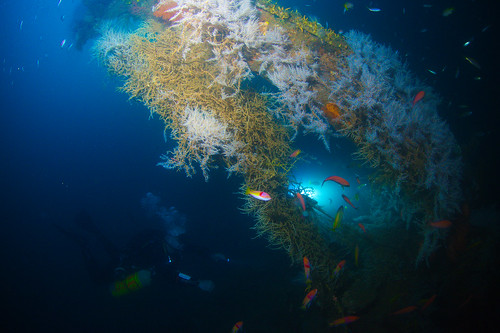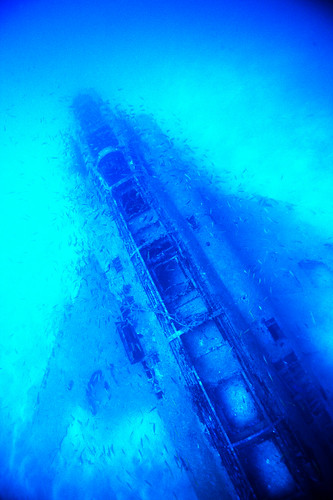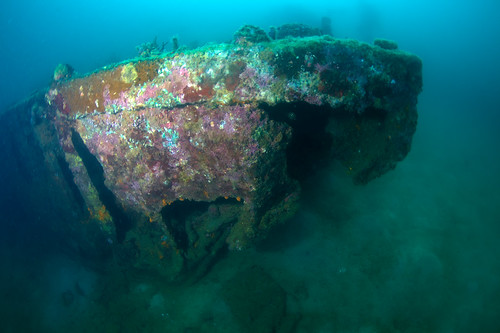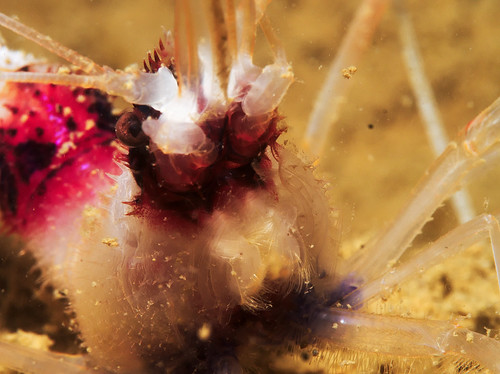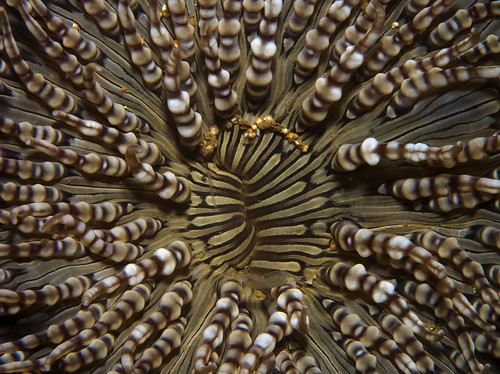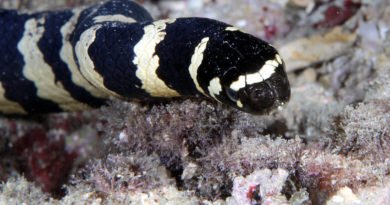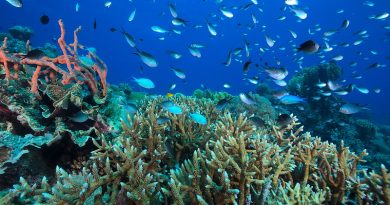Wide lens, macro lens, wide vision, narrow vision
I had an interesting experience two weeks ago, underwater in the Philippines: I saw the same dive sites with two different photographic lenses mounted on my camera – and this made me see the same ship wrecks from a very different point of view. This is an effect probably many photographers experience but it’s still amazing: A piece of technology in your hands can determine how you see – seeing is such a basic human capability, but it can be massively tweaked by the cognitive effects operating a piece of electronics gear has. My visual system operated differently, depending which type of camera kit I was holding.
In my case, I went to visit my mate Kent at Arizona Dive Shop in Subic Bay/Philippines for the first time this January. I was quite excited to see all the wrecks in Subic – the oldest ones stemming from the Spanish – American war (in 1898; a known blowout victory for the ‘Muricans). These wrecks are super cool structures, which often create an eerie atmosphere underwater. The first time I dived there I photographed with my
connected to a
This is a very wide lens, 50 mm corresponds approximately to the field of view of human vision (a photograph taken with a 50 mm lens covers about as much space, left to right, as a human can see without moving his head). A 17 mm lens is significantly wider and covers a huge field of view. That’s perfect for shooting large wrecks. When I was swimming around with such a wide-angle lens mounted on my camera, I was composing to fit structures several meters large into the frame of my shots. My eyes were scanning for nice diagonal lines formed by the wrecks, dark-light contrasts on the wrecks’ edges, and interesting coral growth on the metal structures – all in the spatial range of meters to tens of meters.
A few months later, this October, I went back to Subic to photograph the small stuff: sea slugs, shrimps, small fishes and flatworms. I was using a
mounted on my Canon 5DII. This is a very nice macro lens which creates a super sharp image of subjects tens of centimeters large or smaller. I also used my
This is also a great macro set-up. The 60 mm lens on this cropped sensor camera (smaller than a classic 35mm negative) can produce very sharp shots of animals (or parts thereof) smaller than a centimeter. I love this macro set-up, it’s also very conveniently small sized.
Wrecks are great hiding places for minute animals. The cracks and the crevices allow them to get away from the predators which want to feast on them. Now I was looking for a tiny slug, a mere spot of color among the algae overgrowing a wreck. Or I was looking for a goby, a small fish hiding behind the corner of a metal plate which once was a part of a war ship. That goby might only be there for a few seconds, and is not larger than two or three centimeters. My eyes were scanning for objects in the size range from centimeters to tens of centimeters. I was diving the same dive sites, but looking for things to photograph about a hundred times smaller than a few months earlier. Yes, I still realized that I was on ship wrecks, but I barely noticed the trippy shapes of the bow, bridge and deck structures of these sunken ships. Instead I scanned the wreck’s metal plates for the inhabitants of a micro-zoo. On my first visit to Subic, when using a wide-angle lens, I did notice a few small animals here and there, but I just got a glimpse of a fauna which I only explored in detail on my second visit. I saw completely different things on my two different visits to Subic, because I intended to photograph different scales of the same dive sites, and had brought different pieces of technology. My choice of lenses before the dive steered my perception in quite a radical way – looking out for stuff that’s 100 times smaller. My eyes had become slaves to my camera lenses.
How does this work? I would speculate that our eyes’ saccades are the main players in selecting which scale to look at. Our eyes almost never stay still, but move around at a fast pace. There are two parts of the system of directing eye movements – an involuntary one which reacts, for instance, to quickly moving objects entering our field of view. The second part of our saccade directing system is operated by voluntary control: We can of course be asked to pay visual attention to a specific object in front of us. In my case in Subic, my lenses “asked” me to look for very large objects on my first trip, and for very small objects on my second trip. And it was quite stunning how different I perceived the Subic wrecks on these two trips. I would speculate that my saccades followed very different patterns on the two dive trips – wide arks on my wide-angle photo trip, and systematic tight scanning of all surfaces in front of me on my macro-trip.
For more thoughts on the connection between brain science and photography check out this book of mine:
Now also available as an eBook.


